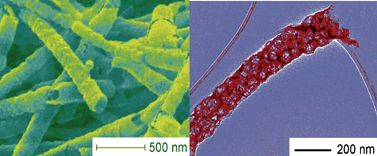Molecular based, chimie douce approach to 0D and 1D indium oxidenanostructures. Evaluation of their sensing properties towards CO and H2†
Abstract
The synthesis of a new molecular In(III) precursor complex, the generation of nanoscaled In2O3 (bixybyte structure) in


 Please wait while we load your content...
Please wait while we load your content...